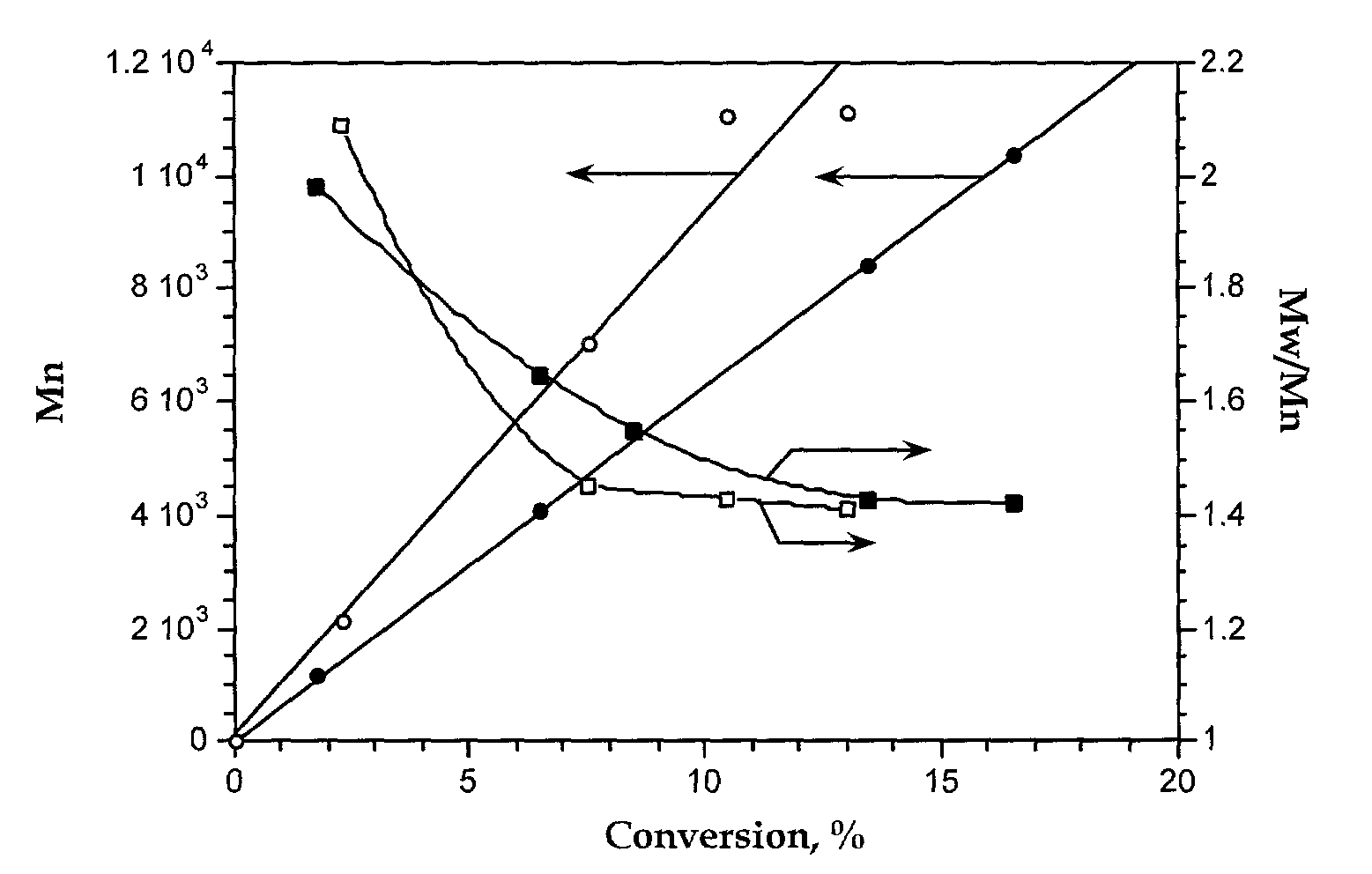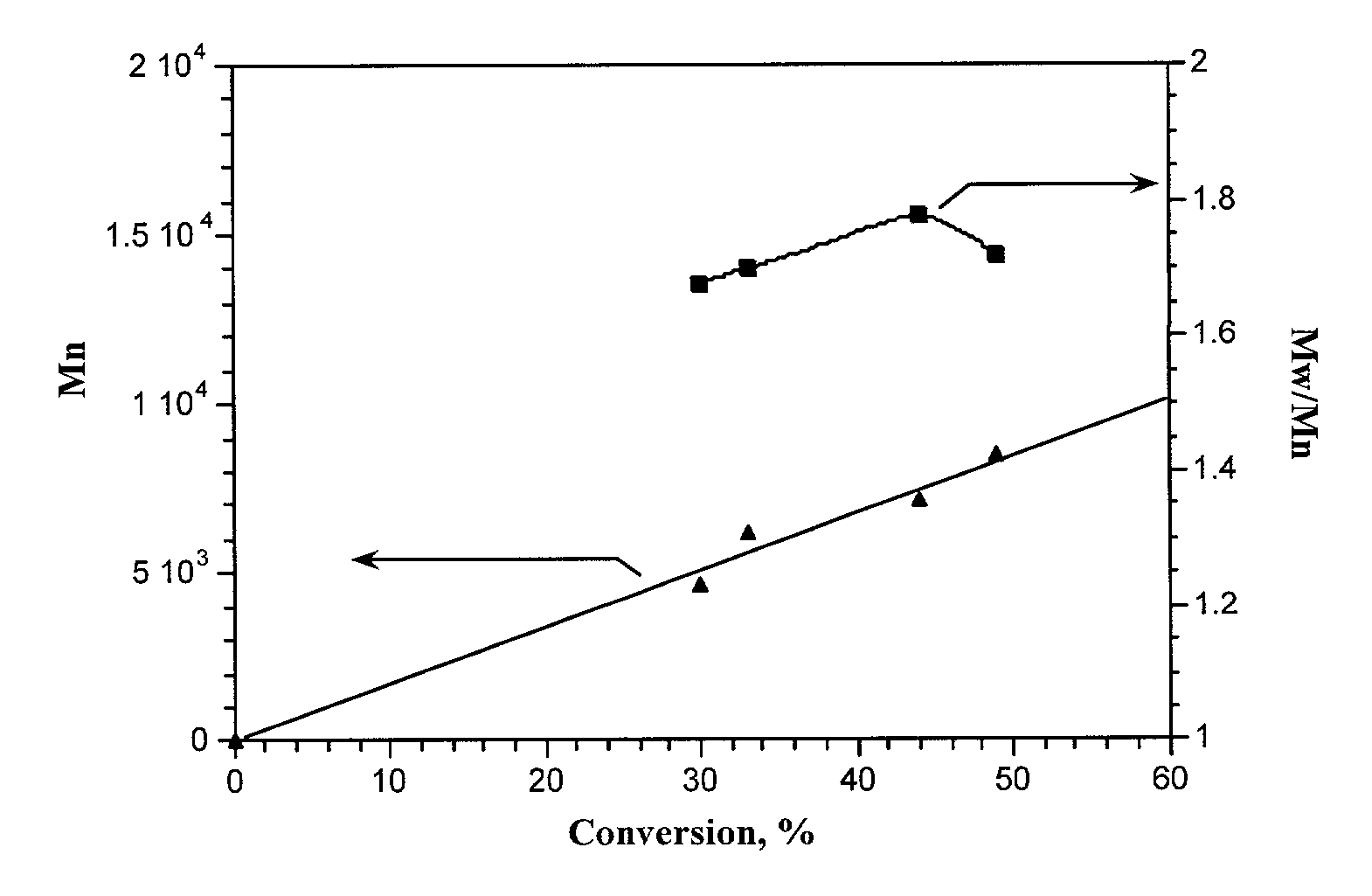Aqueous room temperature living radical polymerization of vinyl halides
a technology of living radicals and polymerization methods, which is applied in the field of living radical polymerization of halogen containing monomers, and can solve the problems of limited control over the molecular weight and polydispersity of the resulting polymer, thermal instability of vc polymers, and inability to prepare poly(vinyl chloride) by any method reported
- Summary
- Abstract
- Description
- Claims
- Application Information
AI Technical Summary
Problems solved by technology
Method used
Image
Examples
Embodiment Construction
describe the initiation performed from .alpha.-haloesters. Example 9 describes the synthesis of a block copolymer by initiating from the Cl chain end of PMMA synthesized via living radical polymerization. Examples 10 to 16 describe the VC polymerization initiated from benzyl halides and pseudohalides, while examples 17 and 18 exemplify .alpha.-cyanoesters and example 19 describes the use of sulfonyl halides as initiators. The polymerization may be performed in o-DCB, THF or DMF. In o-DCB, at constant [VC]:[I]:[C]:[L] ratios, lower temperatures lead to higher molecular weights and narrower Mw / Mn but lower conversions (#4-6).
[0062] Table 2 presents the TiCp.sub.2Cl.sub.2 catalyzed polymerization of VC initiated from various halides. By itself, in the absence of added initiator, TiCp.sub.2Cl.sub.2 catalyzes VC polymerization only to very low conversion. Polymers can be obtained in the presence of .alpha.-haloesters (examples 21 to 25), benzy halides and pseudohalides (examples 26 to 31...
PUM
| Property | Measurement | Unit |
|---|---|---|
| molecular weight distribution | aaaaa | aaaaa |
| temperatures | aaaaa | aaaaa |
| temperatures | aaaaa | aaaaa |
Abstract
Description
Claims
Application Information
 Login to View More
Login to View More - R&D
- Intellectual Property
- Life Sciences
- Materials
- Tech Scout
- Unparalleled Data Quality
- Higher Quality Content
- 60% Fewer Hallucinations
Browse by: Latest US Patents, China's latest patents, Technical Efficacy Thesaurus, Application Domain, Technology Topic, Popular Technical Reports.
© 2025 PatSnap. All rights reserved.Legal|Privacy policy|Modern Slavery Act Transparency Statement|Sitemap|About US| Contact US: help@patsnap.com



